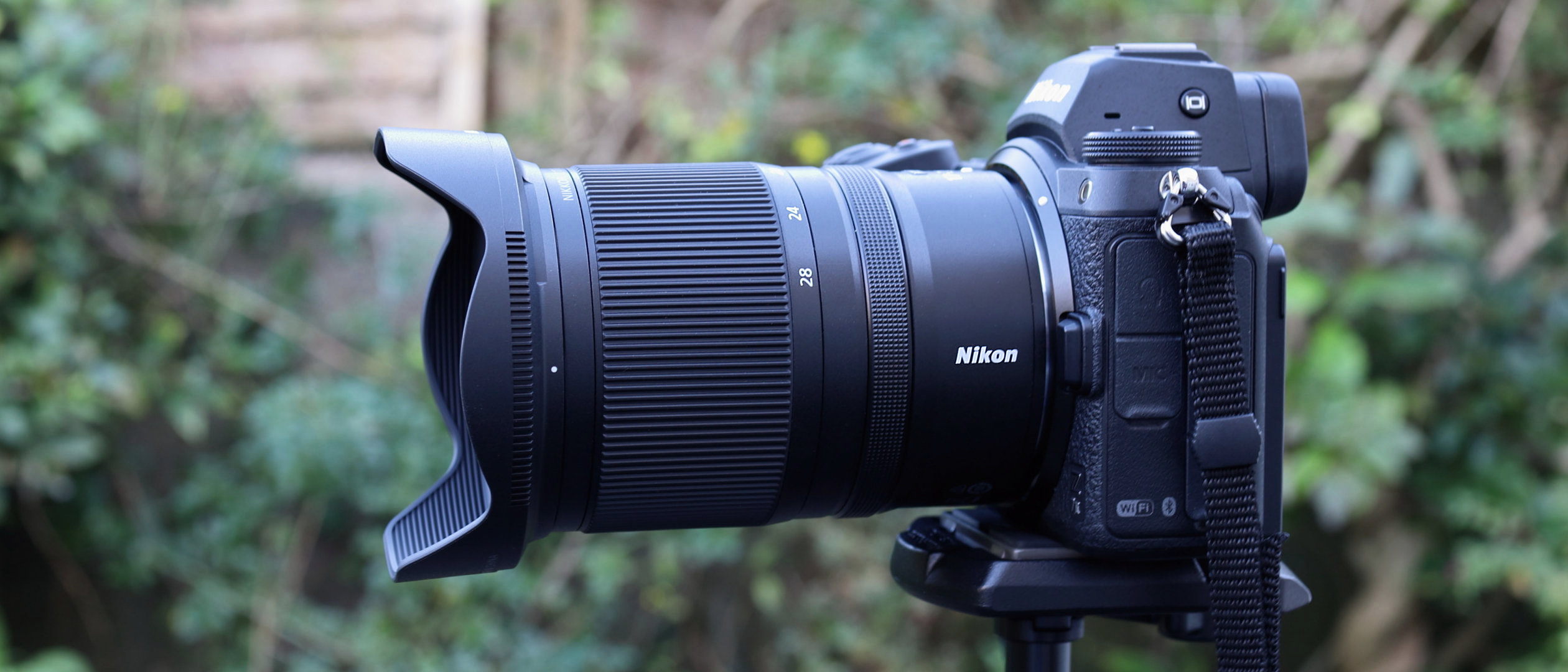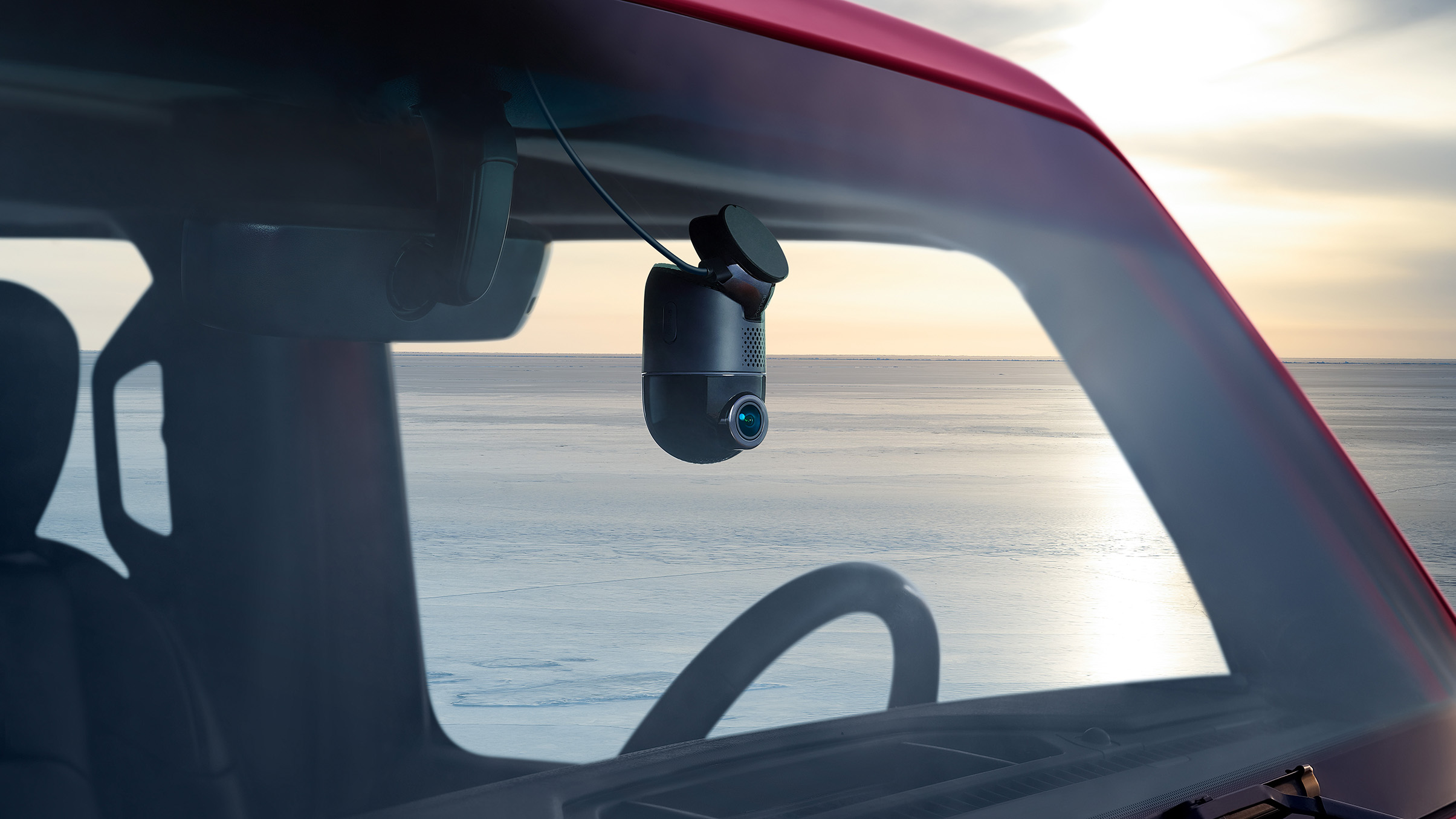Digital Camera World Verdict
So-called ‘trinity’ zoom lenses with a relatively fast and constant f/2.8 aperture tend to be big, clunky affairs which are somewhat at odds with slimline mirrorless camera bodies, rather than their chunky DSLR forebears. And they’re also usually very expensive to buy. Following in the very capable footsteps of the Nikon Z 28-75mm f/2.8 standard zoom, this wide-angle counterpart is comparatively compact, lightweight and affordable, yet delivers excellent image quality and all-round performance. Bargain!
Pros
- +
Excellent image quality
- +
Compact and light for an f/2.8 zoom
- +
Short minimum focus distance
Cons
- -
Modest maximum field of view
- -
No L-fn button or extra control ring
Why you can trust Digital Camera World
The Nikon Z 17-28mm f/2.8 neatly picks up the baton from its Z 28-75mm f/2.8 sibling, with a seamless handover in focal lengths. Like the preceding standard zoom, this wide-angle lens was originally developed by Tamron, to suit Sony E-mount full-frame mirrorless cameras. We’ve reviewed both of the Tamron 17-28mm f/2.8 Di III RXD and Tamron 28-75mm f/2.8 Di III VXD very favorably in the past, the latter subsequently being available in a G2 (Generation 2) iteration. Nikon obviously knows a good thing when they see it, and have repurposed and rebadged both lenses for its Z-system line-up. We’ve given the Nikon Z 28-75mm f/2.8 a similarly sparkling review as the two Tamron lenses, so it’s interesting to see how the newer Z 17-28mm fares.
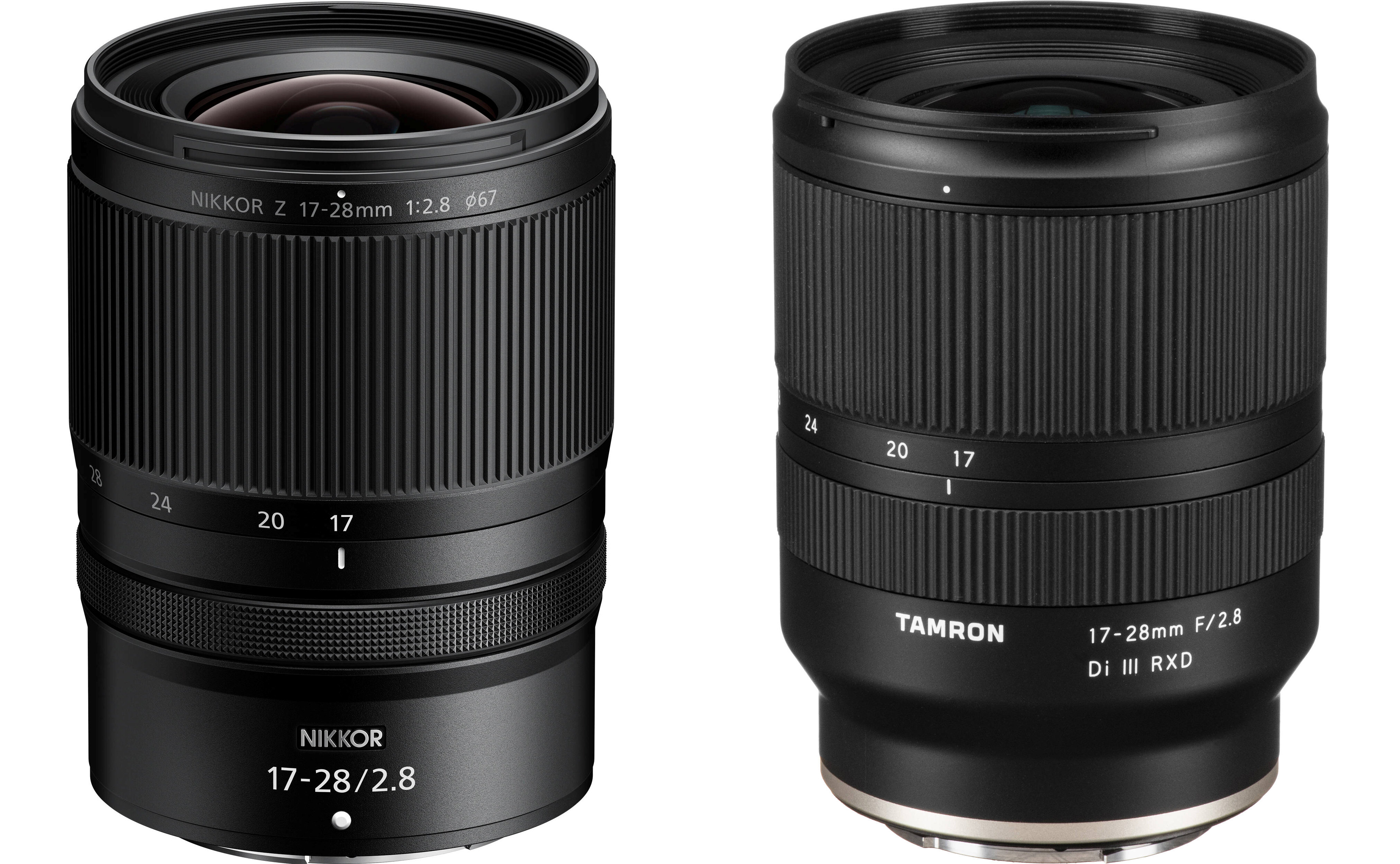
There are still a few holes in the Z-mount lens line-up, including a lightweight 70-300mm telephoto zoom. As it turns out, Tamron is making a Z-mount version of its 70-300mm f/4.5-6.3 Di III RXD under its own name, which we’ve reviewed in the original Sony E-mount version. By contrast, Nikon already has two of its own wide-angle zooms on the market, in the little and large shapes of the Z 14-30mm f/4 S and Z 14-24mm f/2.8 S lenses. Thanks to its retractable design, the former is shorter than the new 17-28mm yet boasts a significantly wider maximum viewing angle of 114 degrees compared with 104 degrees. The latter matches the new lens with an f/2.8 aperture but is much chunkier, 25 per cent longer and weighs in at 650g compared with 450g. And it has a very oversized filter thread of 112mm compared with the new lens’s rather regular 67mm.
Specifications
Mount: Nikon Z
Full-frame: Yes
Autofocus: Yes
Stabilization: No
Lens construction: 13 elements in 11 groups
Angle of view: 104 to 75 degrees
Diaphragm blades: 9
Minimum aperture: f/22
Minimum focusing distance: 0.19m (W) 0.26m (T)
Maximum magnification ratio: 0.19x
Filter size: 67mm
Dimensions: 75x101mm
Weight: 450g
Key features
In a nutshell, the 17-28mm lens’s standout feature is its fast and constant f/2.8 aperture. For shooting under low lighting, that can make a big difference to shutter speeds when you need to freeze a subject’s motion. It’s also a bonus if you want to shoot a starry night sky. But there’s more. The 17-28mm has a significantly shorter minimum focus distance than the other two Nikon Z-mount wide-angle zooms. It’s just 0.19m at the shortest focal length, stretching to 0.26m at the long end. Especially at the wide-angle end, that compares very favorably with the 0.28m of the other two Nikon lenses. What’s more, the f/2.8 aperture enables you to throw the background out of focus with a tight depth of field when shooting close-ups.
The compact design is bound to be another plus point for many, a further bonus being that the overall length of the lens doesn’t extend at any zoom setting. That said, it does have an inner barrel which extends towards the front of the outer casing when decreasing the focal length from 24mm down to 17mm. The lens is supplied complete with a bayonet-fit, petal-shaped hood and a soft carrying pouch.
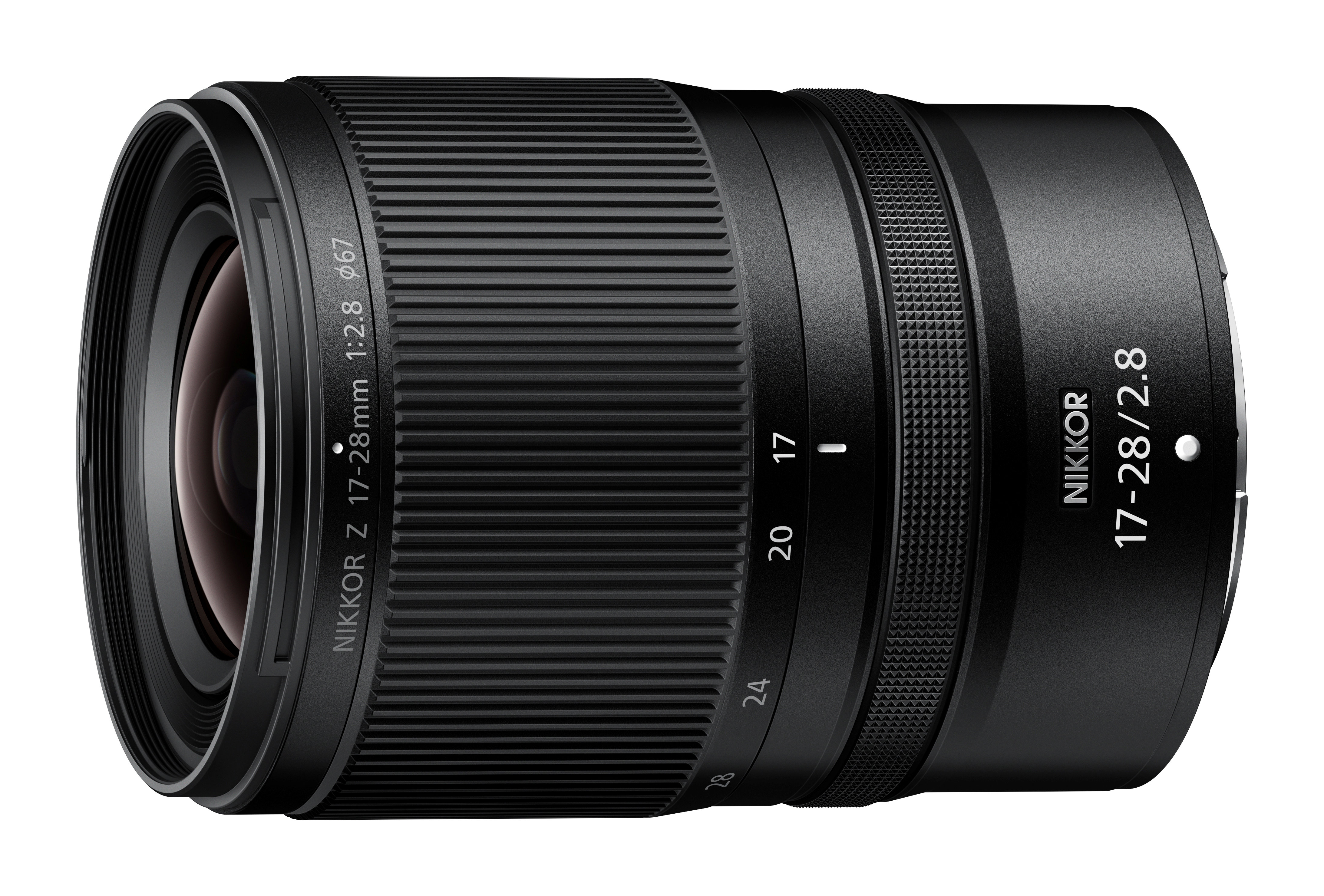
Despite the competitive selling price of the lens, there’s no shortage of quality glass, which includes three aspherical elements, two ED (Extra-low Dispersion) elements and one Super ED element, aiming to optimize sharpness and clarity while reducing unwanted aberrations.
Build and handling
Build quality feels solid despite the relatively lightweight construction. The lens is extensively weather-sealed and has a moisture/grease-resistant coating on the front element. As for handling, the zoom and focus rings work smoothly and precisely, the latter being customizable for other functions when in autofocus mode. These include de-clicked aperture control and the adjustment of ISO and exposure compensation.
It's not an S-line lens and lacks some of the up-market trappings featured at the higher echelons of the S club. As such, there are no L-fn (Lens function) buttons nor an OLED display. There’s no third control ring either but, really, the omission of these fancy handling extras helps to keep the size and weight down, as well as the price.
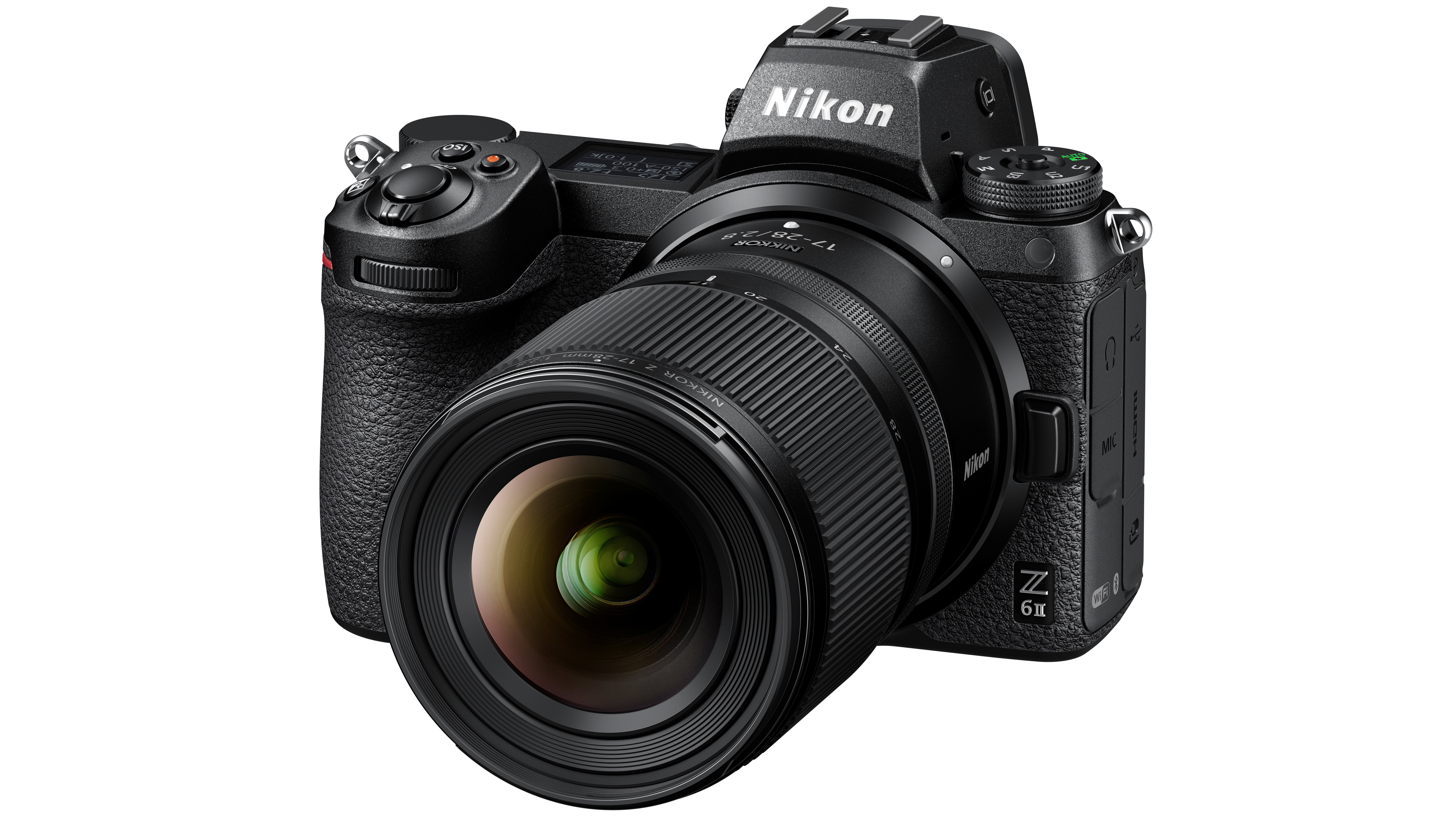
Performance
The autofocus system is very snappy for stills, while also delivering smooth transitions for video capture, along with negligible focus breathing and virtually silent operation. There’s no optical VR (Vibration Reduction) but the lens takes full advantage of in-body stabilization, featured in all of Nikon’s full-frame Z system cameras. Sadly though, you’ll lose out on stabilization if you use the lens with DX (APS-C format) Z system cameras, which lack IBIS. On the Z 30, Z 50 and Z fc, the lens gives a still very useful effective zoom range of 25.5-42mm with the same bonus of the fast and constant f/2.8 aperture.
As a wide-angle zoom, the Nikon does really well to retain sharpness right out to the edges and corners of the frame, even when shooting wide-open at f/2.8. That’s especially true in the shorter half of the zoom range. Color fringing is entirely negligible across the whole image frame, at all combinations of focal length and aperture.
Distortions are well controlled, even without relying on automatic in-camera correction. There’s only a little barrel distortion at 17mm, and a slightly more noticeable amount of pincushion in the 24-28mm sector of the zoom range. Vignetting can be noticeable when shooting at f/2.8 throughout the zoom range, but in-camera correction is available. All in all, image quality and overall performance are excellent.
Sample images


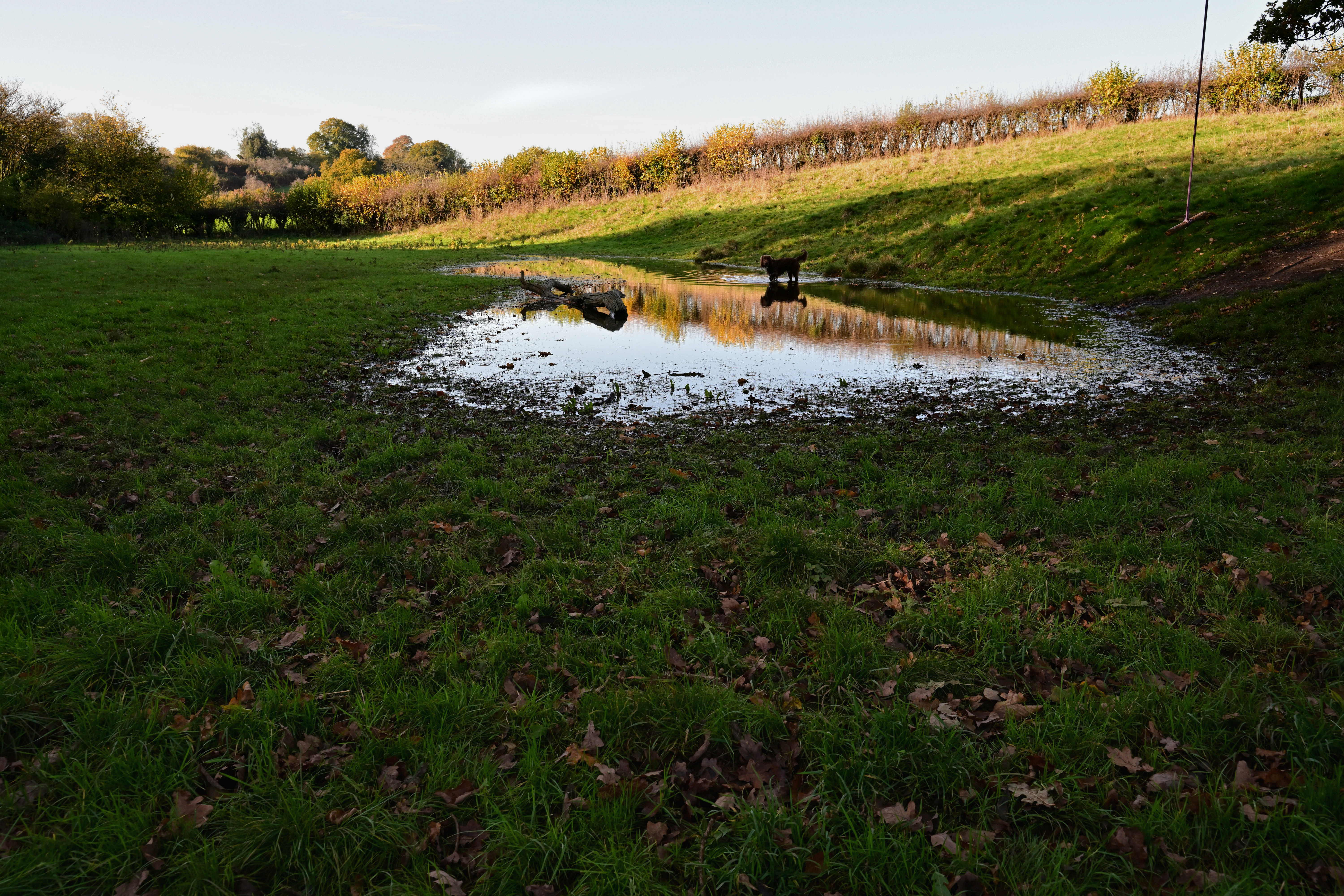
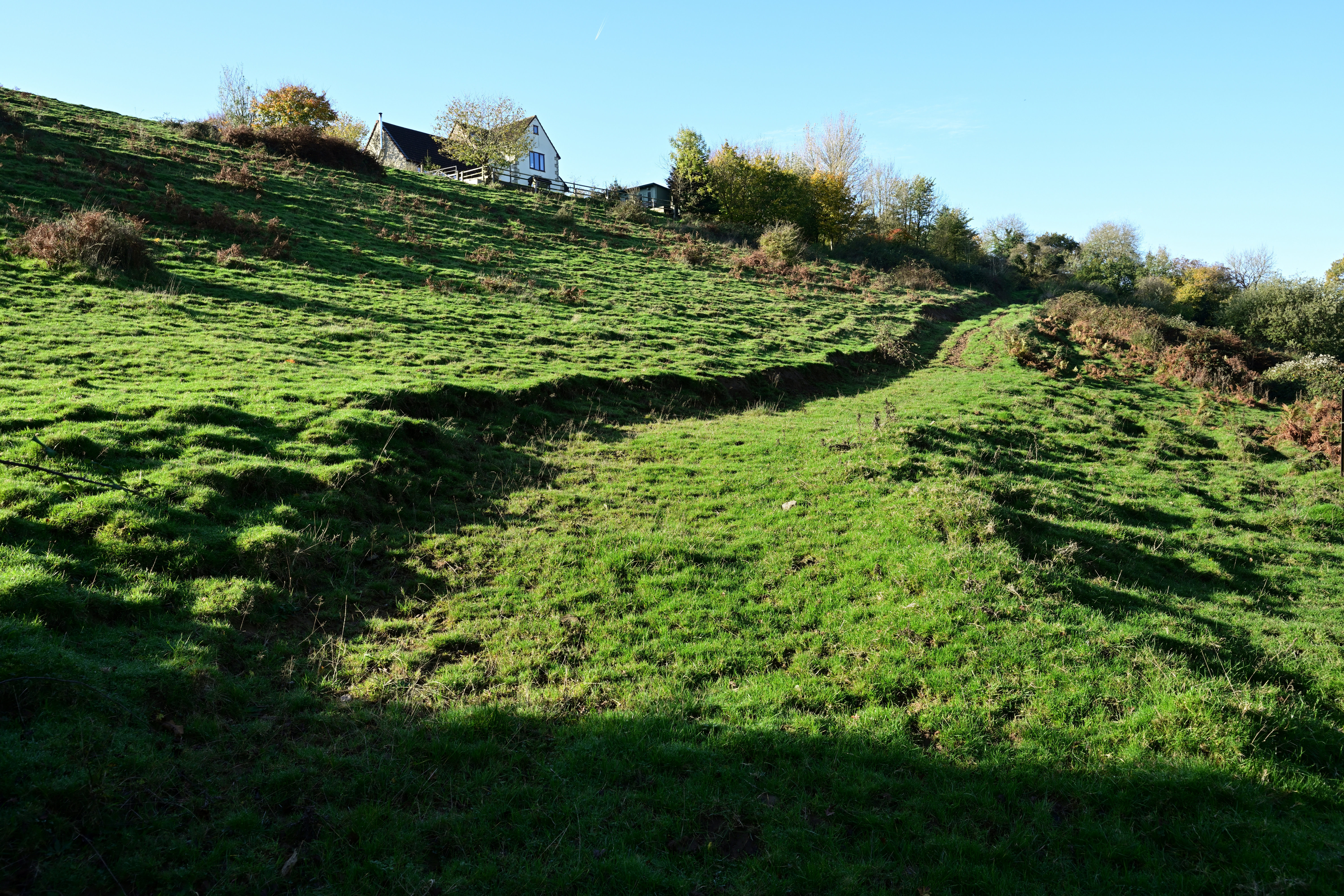


Lab results
We run a range of lab tests under controlled conditions, using the Imatest Master testing suite. Photos of test charts are taken across the range of apertures and zooms (where available), then analyzed for sharpness, distortion and chromatic aberrations.
We use Imatest SFR (spatial frequency response) charts and analysis software to plot lens resolution at the center of the image frame, corners and mid-point distances, across the range of aperture settings and, with zoom lenses, at four different focal lengths. The tests also measure distortion and color fringing (chromatic aberration).
Sharpness:
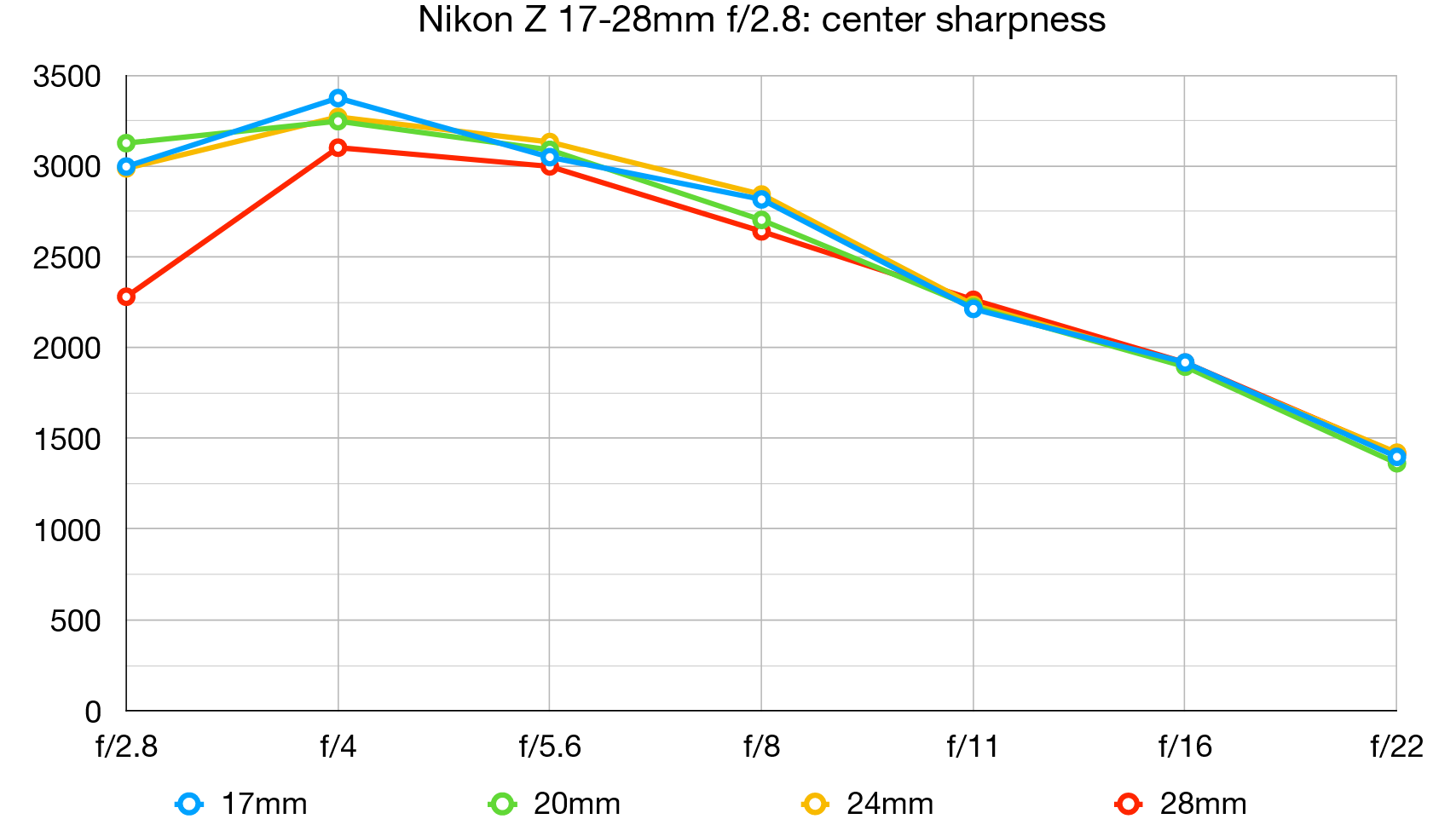
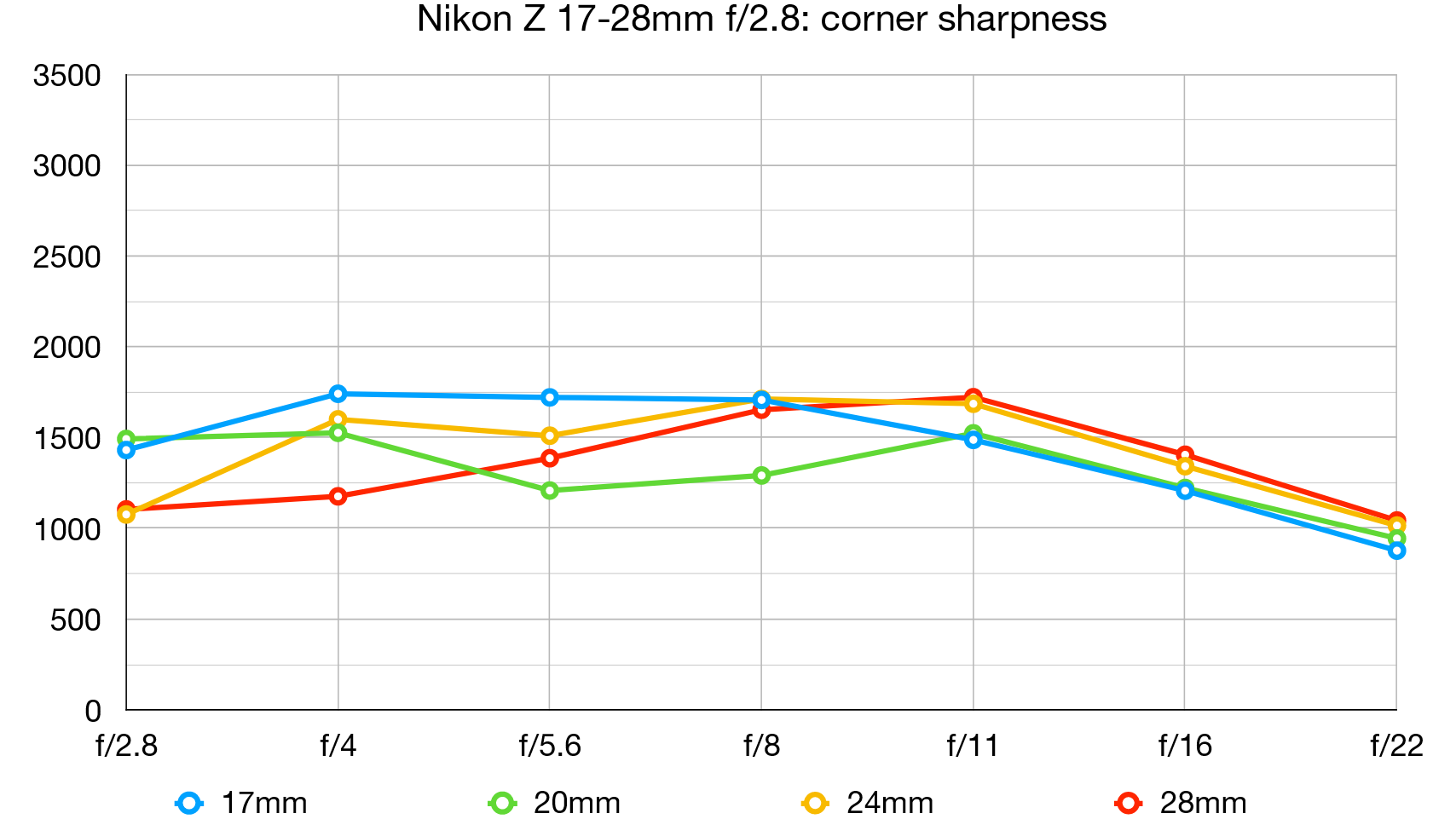
Levels of sharpness in the central region of the image frame are spectacular throughout the entire zoom range, although there’s a slight drop-off at 28mm when using the widest f/2.8 aperture. Sharpness is also very impressive out to the edges and corners of the frame, especially in the shorter half of the zoom range.
Fringing:
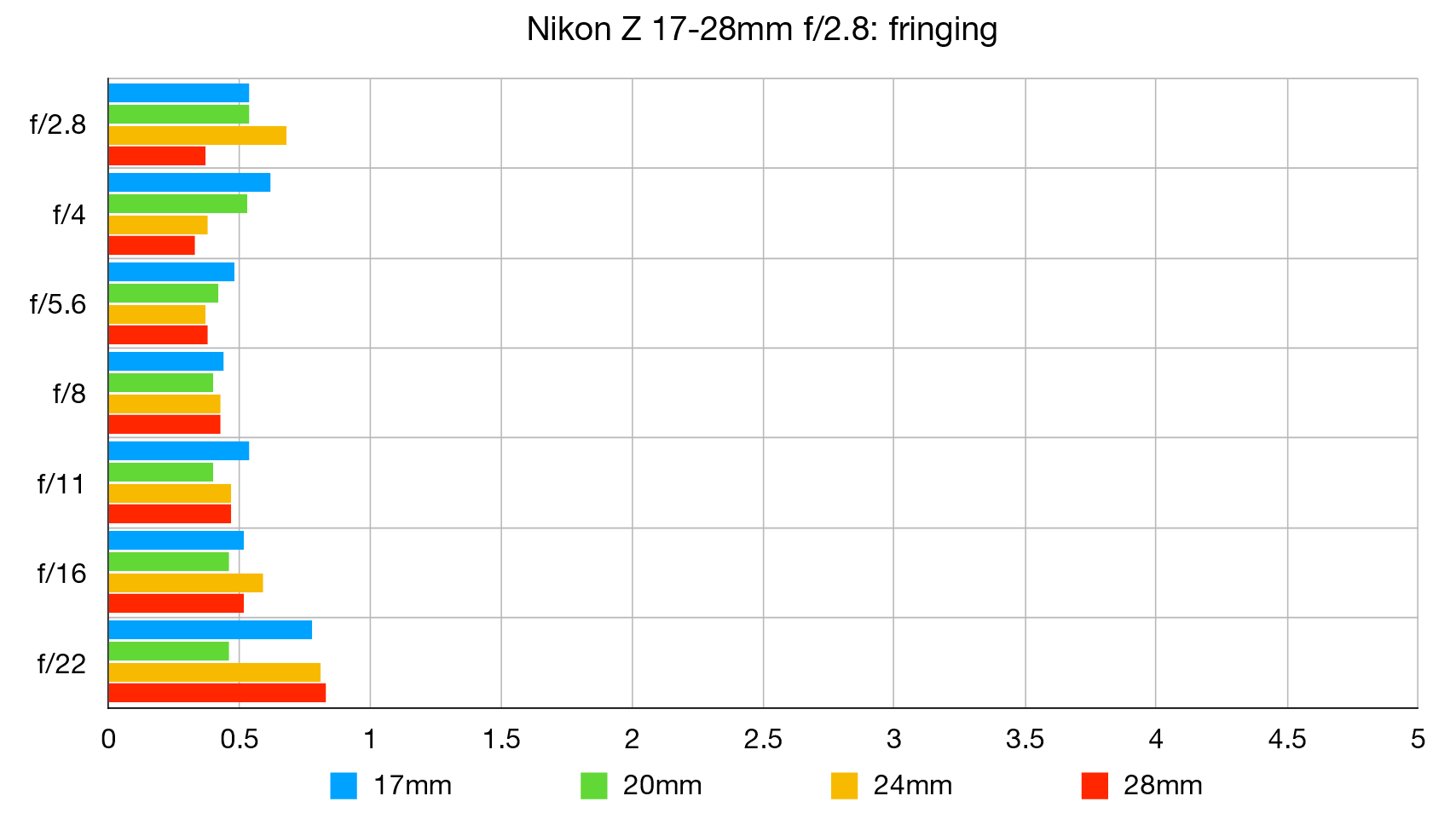
Color fringing is very negligible, even without taking in-camera correction into account. And that’s right out to the corners of the frame at all zoom and aperture settings.
Distortion:
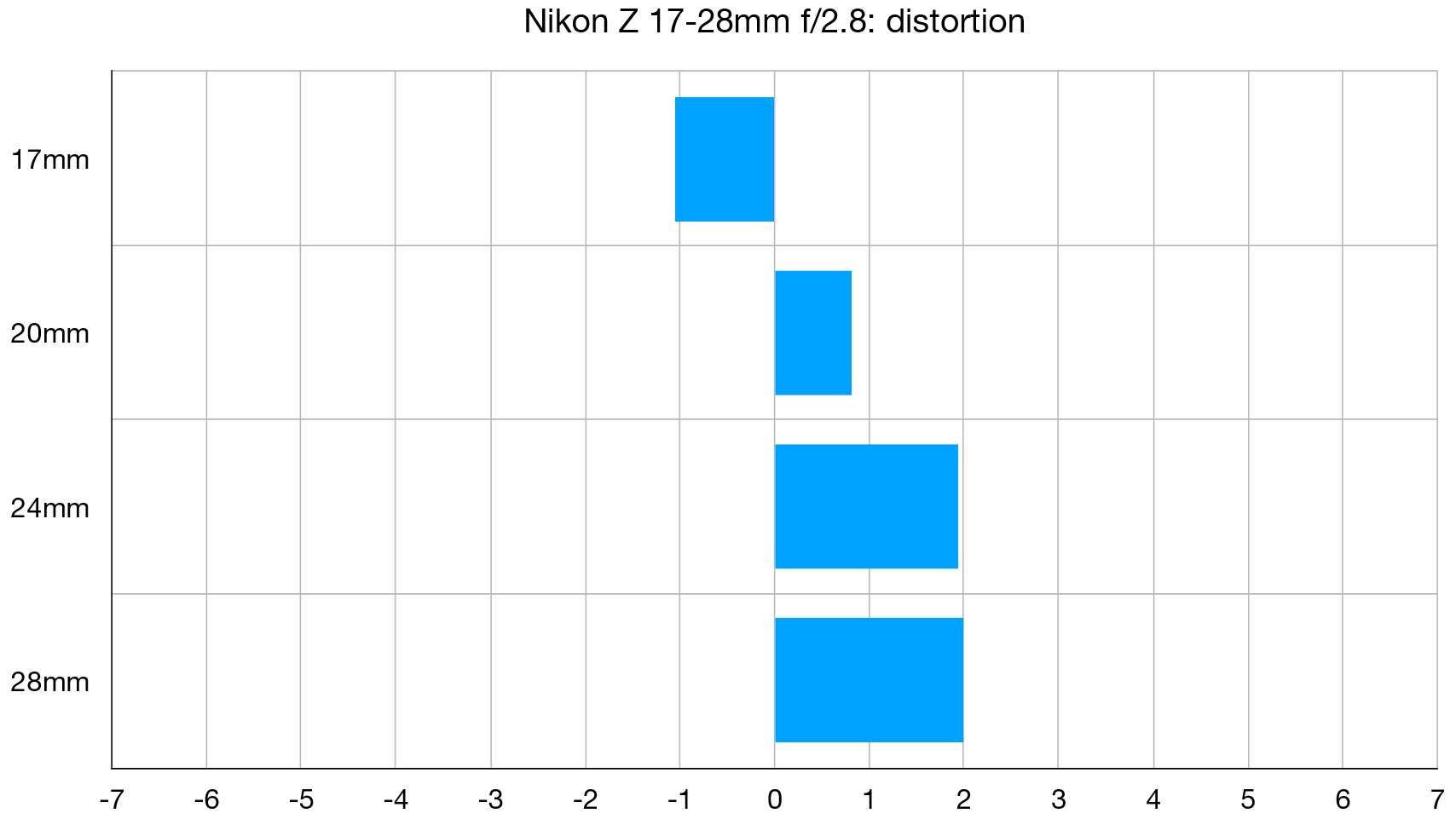
Even uncorrected in-camera, there’s only minor barrel distortion at the shortest 17mm focal length, and slight pincushion at 20mm. Pincushion distortion can be more noticeable in the 24-28mm sector of the zoom range but in-camera correction is available.
Verdict
So-called ‘trinity’ zoom lenses with a relatively fast and constant f/2.8 aperture tend to be big, clunky affairs which are somewhat at odds with slimline mirrorless camera bodies, rather than their chunky DSLR forebears. And they’re also usually very expensive to buy. Following in the very capable footsteps of the Nikon Z 28-75mm f/2.8 standard zoom, this wide-angle counterpart is comparatively compact, lightweight and affordable, yet delivers excellent image quality and all-round performance. Bargain!
Read more:
• Best camera lenses to get
• Best Canon lenses
• Best Nikon lenses
• Best Sony lenses
Matthew Richards is a photographer and journalist who has spent years using and reviewing all manner of photo gear. He is Digital Camera World's principal lens reviewer – and has tested more primes and zooms than most people have had hot dinners!
His expertise with equipment doesn’t end there, though. He is also an encyclopedia when it comes to all manner of cameras, camera holsters and bags, flashguns, tripods and heads, printers, papers and inks, and just about anything imaging-related.
In an earlier life he was a broadcast engineer at the BBC, as well as a former editor of PC Guide.

